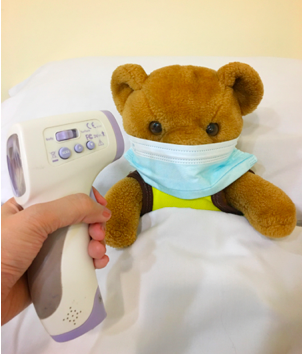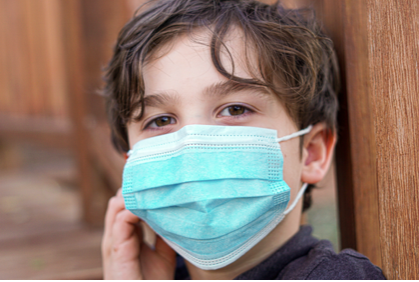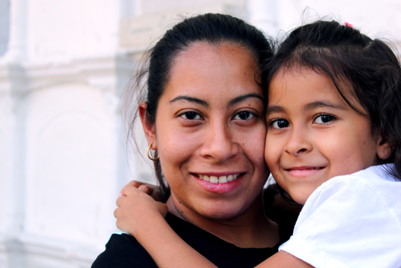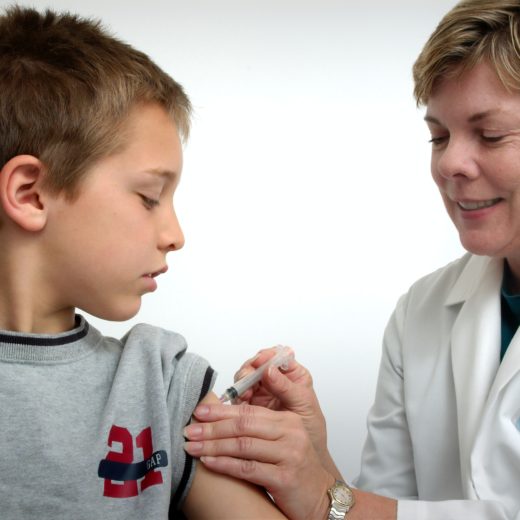– A Guide for Parents on How to Make Medical Procedures as Stress-Free as Possible –
As a parent, it is almost inevitable that your child will have to face a daunting, anxiety-provoking medical procedure at some point, be it a blood draw, stitches, vaccinations, you-name-it. In my role as a primary care family physician, I often see the looks on parents’ faces, and hear in their voices, the anxiety and fear that comes up for them about their child going through a potentially traumatic medical experience. This is especially the case if they themselves and/or their child have already experienced traumatic medical stress.
You may think that I am being dramatic by calling these sorts of medical experiences “trauma,” as nobody likes these procedures and it is healthy and normal for a child to be upset by them. This is only partially true. It all has to do with the child and parents’ subjective experience after the event.
If it is felt to be negative experience, the National Childhood Traumatic Stress Network calls this sort of trauma “Pediatric Traumatic Medical Stress (PTMS),” which is defined as “a set of psychological and physical responses of children and their families to pain, injury, serious illness, medical procedures, and invasive and frightening treatment experiences”. PTMS, at minimum, causes distrust and fear of medical providers which can have lasting effects into adulthood. At worst, it can trigger Post-Traumatic Stress Disorder (PTSD).
Is it trauma? It all has to do with the child and parents’ subjective experience after the event.
This is the moment when you, as parents, may feel powerless. When a doctor decides that bloodwork or a medical procedure is necessary, it can seem that the traumatic event is inevitable and there is little to be done to protect your child. Fear not however, as there are many things you can do as a parent to curate the best outcome for the upcoming medical procedure: your child feeling pride that they did something brave and you feeling relieved that it was successful and is now behind you.
Below you’ll find a list of tips for situations where you have the chance to plan for an upcoming medical challenge. Next, there is a second list of recommendations to support you and your child if you are faced with an urgent procedure. Finally, I’ve provided a list of things you can do during medical procedures, including options for reducing pain, to make procedures much less stressful and more successful.
Planning Ahead
1) Check your own anxious feelings: This step is number one because it is most important. If you, the parent, are anxious about your child getting a particular procedure or treatment, they absolutely will feel the same. Your anxiety will rub off on them. It is worth looking back at your own medical history to see if you have experienced medical trauma.
If so, this may be the perfect opportunity to do your own mental/emotional work – either through therapy or other means – to help heal your own trauma and to ground yourself before moving forward. It is absolutely okay to normalize anxious feelings with your children around a new procedure but it is also important to model how to face it. Overcoming adversity is necessary for us all to learn and grow.
Checking your own anxious feelings is the most important step.
2) Research: If the procedure is not urgent, it is recommended that you do some research to find out who the best pediatric phlebotomist/gastroenterologist/etc. is in town and make an appointment with them. Ask your friends/family/child’s doctor to get a good referral. Find out exactly what the procedure looks like to the best of your ability. It may even be possible to visit the location ahead of time (by yourself) so you can be familiar with the layout, the atmosphere of the waiting room, etc.
It is also worth your time to find out if the medical facility you are going to has a Child Life Specialist (CLS) on staff. A Child Life Specialist is someone who specializes in supporting children through medical procedures, minimizing trauma, using play and a variety of other tools. Many hospitals have a CLS on staff (here in Tucson, they have Child Life Specialists at Banner and TMC), but they are not yet common in other types of medical facilities. You may be able to find a CLS in private practice that you can hire (either in person or over telemedicine) to support you and your child through the procedure, which in the end could be priceless.
Read books and watch videos together that show what your child can expect.
3) Prepare your child: The more prepared your child is ahead of time, the more likely it is that the procedure will go well. If possible, watch made-for-kids videos together about the pending procedure so they know what to expect. The website Kid’s Health has lots of “Getting a….” movies: blood draws, strep throat swabs, CAT Scan, etc. Read books together about going to the doctor so they know what to expect at a well child visit. Buy them a kid’s medical kit and let them practice on their own stuffed animals or babies. Support them in playing, drawing, acting, singing, dancing about it. This is their way of preparing for the big day and the more they can do it, the better.
It is especially important at this time to be completely honest with them about how the procedure will go. If you know it will hurt, do not lie to them, but instead talk about how the pain will be minimized (more on that to come). It may be tempting to downplay the experience or even not talk about it at all and surprise them, but in the end this makes everything worse. It causes a general mistrust, not only of the medical providers but also of you, as you were not honest with them. And it increases their chance of having a PTMS event. Be clear in communicating that doing the procedure is not optional but they will have choices along the way to make it go as smoothly as possible.

4) Build a “Coping Kit”: Child Life Specialist, Shani Thorton, recommends on her blog “Child Life Mommy” that you build a “Coping Kit” together. This is a bag that your child will bring with them to the medical procedure. Let them decide what and who should come along – “blankies” and/or favorite stuffed animals, books, pacifiers, water bottle, snacks. Other things to maybe include would be items for “alternative focus” – bubbles, squishy balls, Look-and-Find books, magic glitter wands, iPad. Your child may also want to bring their own fun bandages. This way your child will have comforting things to play or snuggle with in the waiting room before the procedure.
When Planning Is Not Possible
If the procedure is happening right away and you have not been given notice to adequately prepare yourself or your child as described above, this is where your calm, regulated self must shine.
1) Regulate your own body: Before doing anything, take a moment to check in with your own heart and body and if you are feeling anxious, do deep breathing exercises or any other favorite technique to make sure you are regulated/calm. I can’t stress enough that your confidence and relaxed state will be absorbed by your child. They look to you to be brave.
2) Make a plan with your child: After calming your own body down, take a moment to discuss the pending procedure with your child. Make sure to be honest about what they should expect and then take time to listen, listen, listen to their concerns and fears. Keep your voice low and make good eye contact. Validate their emotions. If possible, show them a movie that demonstrates what to expect (kidshealth.org) and then if they are up for it (and you have time), do some regulating movement activities, such as walking, dancing, coloring, breathing exercises, etc. The more you can help them stay calm and regulated, the better.
Make sure to be honest about what they should expect and then take time to listen, listen, listen to their concerns and fears.
3) Dealing with dysregulation: If your child becomes dysregulated either before or during the procedure, before moving forward it is of utter importance that you take the time to help them “regulate, relate, and then reason.” This approach is based on research on trauma and the brain by Dr. Bruce Perry. Remember – you cannot connect to their brain if they are dyregulated. They will not hear anything you say. Instead, use whatever tools you have in your toolbox or “coping bag” to help them become regulated again (movement, being silly, hugging, singing, bubbles, movies, etc.). Then validate their emotions (relate).
After they become calm and understand that you hear their concerns, you can reason as to why this procedure is necessary and make a plan to get it done. Make it clear again that doing the procedure is not optional but do provide them choices as to how to make the procedure go as best as it can. For example, you might ask, “Would you like to countdown or look away?” or, “Would you like to sit in my lap or have me hold your hand next to you?” Please do not use the language, “Be a big boy/girl,” as it can be shaming if the procedure does not end up going well. Instead, provide support by telling them you know that they can do hard things and say, “I’m here with you.”
Planning for Pain
There are some helpful tools that you may be able to acquire to minimize the pain of the procedure for your child, all of which take some planning ahead of time.
1) Emla Cream: This is a prescription cream that contains Novocaine to numb any area before a needle stick. You do need to apply it one hour before the procedure in order for it to have its full effect. Please note, for some children, this could be more anxiety provoking as it may make them think that the procedure is more painful than it actually is.
2) Buzzy Bee: The Buzzy Bee is a tool that literally provides a buzzing sensation just above the area where a needle stick is going to happen. This tricks the brain to focus more on the buzzing than the needle stick and thus reduces the pain response. It works great and it provides a fun distraction for littles. Ask the medical facility if they have one ahead of time. Or purchase one on your own.
3) Breastfeeding or sucrose solution: Breastfeeding releases all kids of relaxing hormones for both baby and mother. If this is an option, it is perfect for when a baby/toddler has to endure a painful procedure. A second choice is sucrose (sugar) solution. Giving babies under 12-months old a little bit of sugar water before receiving a needle stick has been shown to reduce their pain. You can purchase prepared sucrose solution for this exact reason or you can make your own sugar water: mix 1 tsp of white sugar with 2 tsp of distilled or previously boiled water. Give a couple of drops of the solution two minutes before and then immediately before the needle-stick.
Facing the Procedure
1) The ONE VOICE Approach: This is an approach by Debbie Conklin, a Certified Child Life Specialist, to minimize medical stress for children during major procedures. Although as a parent you may not be able to create the exact environment described below, it may be helpful for you to consider these ideas when communicating your needs and your child’s needs to medical providers.
“One voice should be heard during the procedure.” Choose one person to explain the procedure beforehand and be the calming voice during it. This can be the medical provider, nurse, child life specialist, parent, etc. Hearing multiple people discussing different things creates a more stressful environment for everyone, but particularly for children.
“Need for parental involvement” Always insist on being with your child unless it is not medically possible or safe. It is your job to hold, comfort, and/or distract.
“Educate the patient before the procedure about what is going to happen.” You have hopefully already done this, but your child should hear it again from you or from the medical provider (whomever is the “one voice”).
“Validate a child with your words.” Listen to how they are feeling and validate any emotions that arise. Make sure to give them positive feedback on what they are doing well. For example, you might say, “You are doing a great job at keeping your hand still.”

“Offer the patient the most comfortable, non-threatening position.” Laying down is the most threatening position for many children and often requires more people in the room to hold them down. Ask the provider if a “comfort hold” could be an option instead. These can be done with children of any age. Options for comfort positions include back-to-chest bear hug, chest-to-chest bear hug, frog hold (for genital exams, you sit behind them), or the side sit. This is also a great opportunity for your child to have a “choice” while getting the procedure done.
“Individualize your game plan.” This one is more for the medical provider than for parents. It’s a reminder for medical providers to remember that their usual technique may not be the best choice for the child in front of them.
“Choose appropriate distraction to be used.” Another choice for your child! Let them choose if they want bubbles, books, music, iPad, etc. before the procedure. Some children may want to watch the procedure but always have distractions on deck as they still could be needed.
“Eliminate unnecessary people not actively involved in the procedure.” More people make a room feel more chaotic and stressful, and for younger kids, frightening. If possible, leave siblings home so all of your focus can be on your child. Older kids and teens may feel self-conscious with more people in the room. As parents, we may feel limited in enforcing this one, but it might be worth reminding the provider if the room environment seems unnecessarily crowded.

2) Breathing Exercises: Although they do not work for all children, some children do respond to breathing exercises, and if practiced beforehand, they can be a way to help your child stay regulated during the procedure. Focusing on breathing out in particular, helps to stimulate the parasympathetic nervous system (the branch of the nervous system that calms us down). Kid-friendly choices include: “Blowing out the candle” – have them blow hard at your finger over and over to blow out the candle. “Cookie breathing” – breathe in the scent of delicious cookies for 3 seconds, then blow out for 3 seconds (or more) to cool them off. There are many more options, of course. It may be worth searching online and finding one that resonates with your child ahead of time.
Their biggest reward should be big hugs from you and them hearing that they did a great job and that you are proud of them.
3) Bravery Rewards: Finally, it is time to discuss bravery rewards. This is a controversial topic as ideally, we would like our child’s pride in having done something difficult to be the reward itself. If you feel strongly in that direction, that is great. Giving a bravery reward with every medical encounter can be detrimental as the child starts to have the expectation that they should get something on the back end of every medical visit. This catches up to parents and providers alike. I have had children upset with me for not giving them suckers at the end of a visit that went really great up to that point.
I think the answer is probably in the middle. If you and your child have to face something especially difficult, that is out of the ordinary and will not have to be on a repeated basis, I think a treat at the end could be well-deserved. Their biggest reward however should be big hugs from you and them hearing that they did a great job and that you are proud of them. You should be proud of yourself too.

I know all of these ideas take time and patience, and some things are not under your control as a parent. In today’s world, we often see that the emotions of children are undervalued. Parents, medical providers, and others often do not have the time to sit with children to help them get into a regulated space where they can face a scary procedure and get it done. This often ends with the child being forced to get the procedure while they are in a state of terror. I hope these ideas will remind you and medical providers alike that the time invested in making a difficult procedure a positive experience will pay out for everyone in the end… and especially for your child!
At Intuition Wellness Center, we specialize in health and wellness services for children, young adults, and their families. If you think you would like some extra support, we’re here for you.
Written by: Dr. Kate Sage, NMD, Naturopathic Family Physician



2 thoughts on “Avoiding Pediatric Traumatic Medical Stress”
Any suggestions for the tendency to pass out after blood is drawn and thus has developed a high anxiety response when that procedure has to occur? Thanks. 🙂
Hi Kristi, I think the most important thing would be to normalize the fear as much as possible (lots of kids pass out!) and discuss what it looks like when they pass out so they no longer have to be afraid of that happening. In this case, it may take a little more work for you ahead of time to get your child prepared but they (and you!) can do it! Here is an article from KidsHealth that you could share with them ahead of time: https://kidshealth.org/en/teens/blood-draw.html.
Thanks for asking your question!